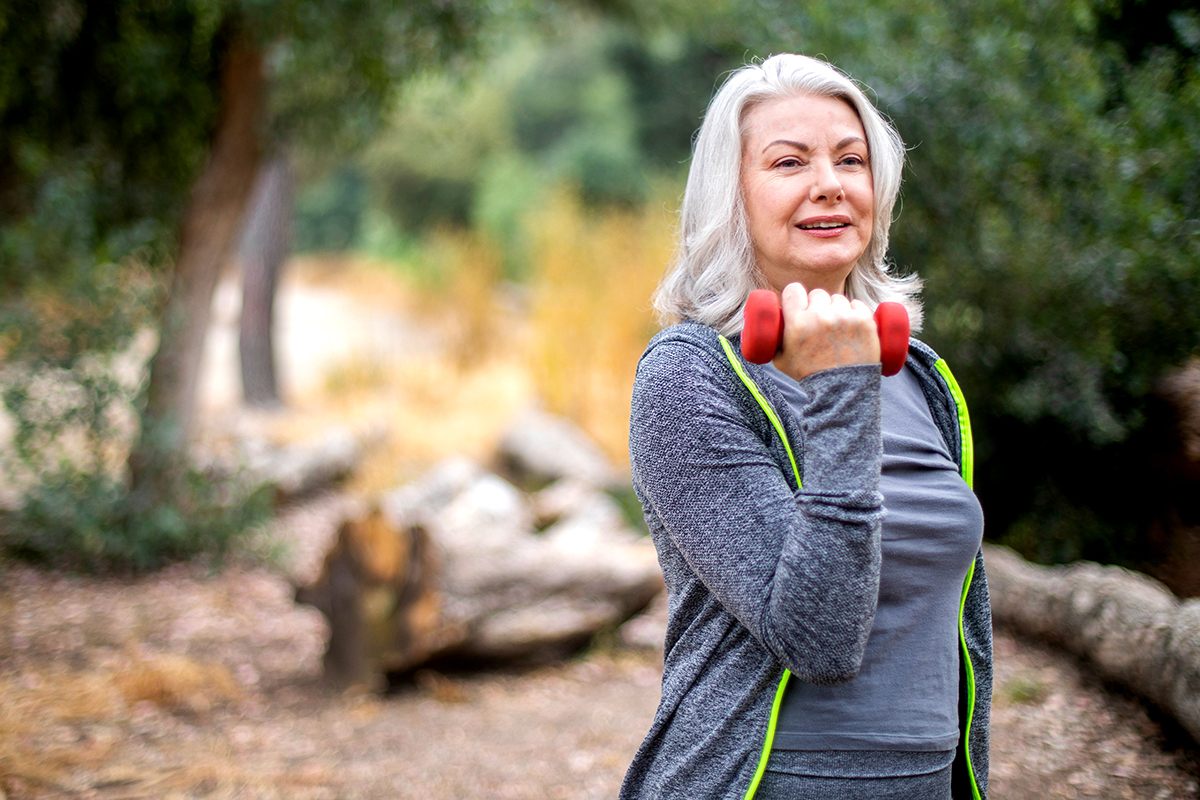5 Better Ways to Get Stronger, According to Physical Therapists
Bonus: You’ll also improve mobility and reduce your risk of injury.

Why do you exercise?
Ask five different people that question, and you might get five different answers. But “for entertainment” probably won’t be one of them.
When you make the effort to exercise, you want results—whether it’s building strong, healthy muscles, improving heart health, boosting bone density, or reducing pain.
As long as you listen to your body, any exercise will move the needle in a positive direction, says Kristen Gasnick, D.P.T., a physical therapist at Excel Physical Therapy in New Jersey. But some strength-training strategies make more of an impact than others.
Like what? The five strength-training swaps below. All came directly from physical therapists who spend their days figuring out how to maximize the benefits of exercise so you can feel your best for years to come.
Instead of: Working Both Sides Together
Try: One Side at a Time
Movements that work both sides of your body at once (think: squats, cable rows, and chest presses) are great for challenging more muscles in a short amount of time. But unilateral, or single-sided, movements like lunges, single-arm rows, or alternating chest presses are a phenomenal way to give each side of your body the unique TLC it needs, Gasnick says.
Try this: Do a few lunges with each leg and notice if one side feels stronger or more stable than the other. If it does, that’s a sign single-sided movements could be especially helpful.
“If one side of the body is weaker, the stronger side will often compensate during bilateral, or two-sided, movements,” Gasnick says. On the flipside, unilateral exercises can help you correct muscle imbalances to reduce your risk of aches, pains, and injury.
What’s more, unilateral exercises train your body for a variety of everyday tasks, Gasnick says. Think about it: Walking, taking the stairs, sweeping the floor, and even getting food out of the refrigerator all work each side of your body differently.
Instead of: Sitting Down
Try: Standing Up Whenever Possible
If you feel safe and confident on your feet, perform as many exercises as possible from a standing position, even upper-body moves like biceps curls or triceps extensions.
Why it helps: Standing exercises are weight-bearing exercises, meaning you have to fight gravity’s pull on your body to stay standing when you do them. That gravitational force is critical to maintaining—and even increasing—bone density, Gasnick says.
Science agrees. A study published in the Journal of Family and Community Medicine found men and women with osteoporosis who performed two weekly sessions of weight-bearing exercise for six months saw better improvements in bone mineral density of the spine and thigh bone compared to those who spent the same amount of time doing non-weight-bearing exercise.
Instead of: Gym Machines
Try: Free Weights
Opting for free weights over strength machines is one easy way to stay on your feet during workouts, as long as you feel safe, says Blake Dircksen, D.P.T., a certified strength and conditioning specialist at Bespoke Treatments in New York City.
But that’s not the only reason to give free weights preferential treatment: Holding onto the handle of a dumbbell or kettlebell actively works the muscles of your hands and forearms to help improve grip strength, which tends to decline during the aging process.
Maintaining a strong grip has a huge impact on your ability to keep doing things like opening a jar, using a can opener, or other daily tasks with ease, Dircksen says.
Instead of: Racing Through Movements
Try: Intentionally Slowing Down
It’s easy to think speeding through sets means you’re working harder by getting your heart rate up, but there’s good reason to slow things down. First, when you perform exercises slowly and under control, you eliminate the possibility of using momentum, meaning you force your muscles to power each move.
Subscribe to our newsletter
It's quick and easy. You could be one of the 13 million people who are eligible.
Already a member? Click to discover our 15,000+ participating locations.
Follow Us
Beyond that, performing strength exercises more slowly increases the amount of time your muscles are under tension, or working against resistance, Dircksen explains. That “time under tension” is a main factor in a workout’s potential for building functional strength.
You don’t have to move in slow motion. Instead, focus on staying in control and taking at least one or two seconds for each phase of an exercise. So if you’re doing a biceps curl, take two seconds to curl up and two seconds to lower back down to the starting position.
Instead of: Focusing Only on the Upward Movements
Try: Give Equal of More Attention to the Downward Ones
First, a little vocab lesson: When you stand up from a squat or curl a dumbbell to your shoulder, your muscles are doing a concentric action, meaning they’re shortening. When you lower down into a squat or lower that dumbbell back to your side, you’re doing an eccentric movement. Your muscles are lengthening.
While many exercises involve both phases, the concentric portion often takes center stage—standing up from a chair, pushing up to a plank position, or pulling dumbbells up toward your body. But there are a ton of benefits to focusing on the eccentric portion—the downward motion of squatting, lowering dumbbells to your sides, or lowering your body during a crunch.
“Eccentric work is helpful in promoting long-term joint mobility, building strength through a full range of motion, and reducing the risk of injury,” Dircksen says. It may also help reduce age-related muscle loss, known as sarcopenia, according to a research review published in Integrative Medicine Research.
This doesn’t mean you should ditch concentric exercises, just try to mix more eccentric training into your routine. You can do this by spending more time in the eccentric, or lowering, phase of any given exercise, like taking four to six seconds to lower your body to the ground during a pushup. Or try doing only the eccentric portion of a movement, like eccentric squats.
How to do it: Stand in front of a sturdy chair and sit down as slowly as possible. Focus on maintaining control rather than just “plopping” down. That’s one rep. Use any assistance you need to safely get back to the start position, and then lower into the next rep. Sooner than you think, you might be able to stand back up from the squat without any assistance.
Take Your Favorite SilverSneakers Classes Online!
SilverSneakers members can access live fitness classes and wellness workshops through SilverSneakers LIVE. See the latest schedule and RSVP for classes here.
Not a member? If you have a Medicare Plan, it may include SilverSneakers—at no additional cost. Check your eligibility instantly here.





